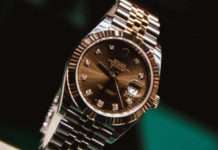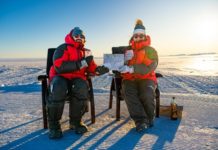- Increased sea lice infestations, scientists say are caused by salmon farms, threaten the already-vulnerable wild Pacific salmon populations in western Canada, worrying conservationists and First Nations.
- Three First Nations in the region are now deciding on the future of open net pen Atlantic salmon farms dotting the channels and waterways in and around their territories. They hope their decisions will pave the way to protect wild salmon, a culturally important species.
- So far, ten farms have been closed and the future of seven farms are to be decided this year, in 2023.
- The impact of the closure of the farms on sea lice and wild salmon populations is still unclear, say scientists, and more time to monitor the data is needed.
VANCOUVER, Canada — Alongside the millions of Atlantic Salmon clustered in the open net pens that dot the waterways around Broughton Archipelago’s over 200 islands, sea lice, a tadpole-shaped parasite, feast on the fish.
In the zeal to establish a salmon market northwest of Vancouver, Canada, many aquaculture companies set up open net pens—cage-like structures where a layer of fishnet separates the farmed salmon from those in the wild—in the 1980s. They were also, however, creating conducive conditions for the spread of sea lice, a blood-sucking parasite found on the aquatic animal.
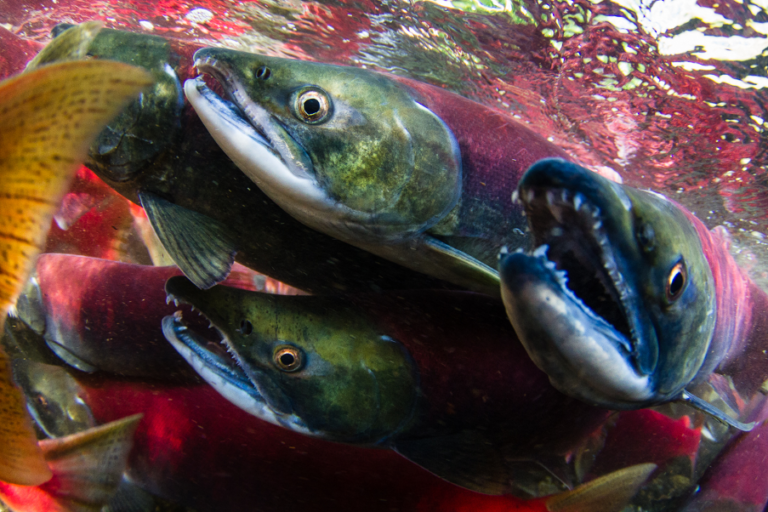
By the early 2000s, communities living in the archipelago began noticing wild juvenile pink salmon—native fish of the Pacific Ocean that aren’t gathered in the pens—returning from their freshwater spawning grounds also infested with the lice. These fish were on their way to the ocean, swimming near the salmon farms and through the meandering inlets—a path they have taken for millennia for this seasonal journey.
In 2002, the number of wild pink salmon (Oncorhynchus gorbuscha) that came to the rivers and creeks on Broughton Archipelago to spawn crashed from over three million fish in 2000 and 2001 to a measly 147,000—an unprecedented decline that natural variations in salmon populations could not explain.
“Open net pen salmon farms in Broughton became a cause of concern,” says marine biologist Andrew Bateman from the Pacific Salmon Foundation. “Similar farms in the Atlantic have been associated with the spread of sea lice, causing a decline in wild populations in Norwegian waters.”
Concerned about the future of the Pacific salmon—an economically, ecologically, and culturally vital fish in the region—the Mamalilikulla, ‘Namgis and Kwikwasut’inuxw Haxwa’mis First Nations began their decades-long struggle to get rid of salmon farms from wild salmon migratory routes. The farm closures, the Indigenous leadership hopes, can protect the wild salmon and help the province move towards sustainable aquaculture.
In 2018, the three nations signed a government-to-government agreement with the provincial government of British Columbia, to create a transition plan for 17 fish farms operated by MOWI Canada West (formerly Marine Harvest Canada) and Cermaq Canada, from the Broughton area between 2019 and 2023.
A First Nations-led monitoring and inspection program has been set up to oversee the fish farm operations and monitor sea lice infestations in the farms during the transition process. The nations are relying on scientific evidence and Indigenous knowledge to guide them in their decisions on whether a farm can stay, must go or can be transitioned to a sustainable aquaculture model.
In the last three years, ten farms have been decommissioned and the future of seven farms are to be decided by 2023.
However, the impact of the farm closures on drastically reducing sea lice population in the region are not yet clear.
“This is not something we are taking lightly. This is serious stuff,” said Hereditary Chief Ho’miskanis Don Svanvik of the ‘Namgis First Nation in an interview with Mongabay, “If the industry could demonstrate to us that they are not detrimental to the wild salmon and the environment, they can stay.”
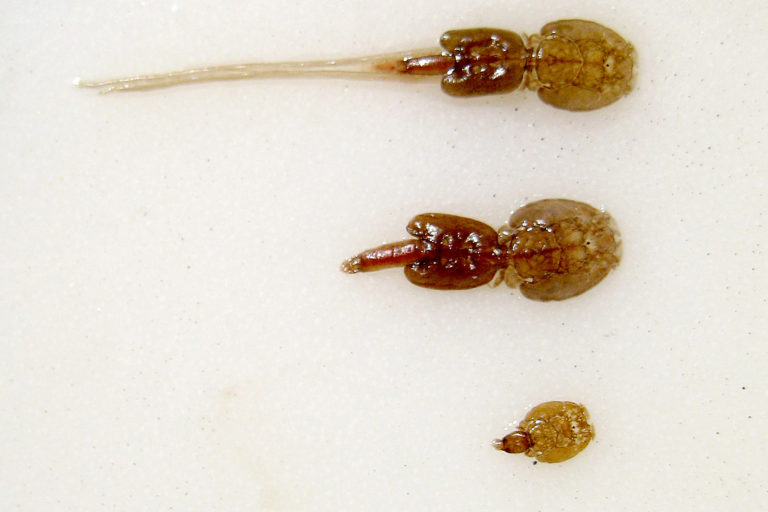
Read more: Chilean law pits indigenous people against salmon industry
A parasitic problem
Sea lice are natural blood-sucking parasites found in the marine environment. Typically, they attach to the ocean-dwelling adult salmon, feeding on its blood and tissue. The adult’s fish scales offer some protection against sea lice bites.
However, since juvenile salmon lack scales and have a weak immune system, a huge infestation of sea lice on the young fish can devour them, affecting the species at a population level. Often, the flesh-exposing bites can lead to secondary infections in the young fish, and the ailing fish become easy prey to predators.
“Predators tend to pick off the lousy fish, which tend to hang out at the back of a school swimming on their migration routes,” says Bateman, who has studied the issue of sea lice infestation in the Broughton Archipelago for over two decades.
This too increases the death of young salmon, affecting the populations in the long term.
The first scientific evidence of sea lice infestation on wild pink salmon around Broughton emerged in 2001, when a study led by marine biologist Alexandra Morton found Lepeophtheirus salmonis, a sea lice species that mostly lives on salmon. Almost three-fourths of all the fish sampled had enough sea lice on them to kill them, and fish sampled from sites closer to salmon farms had more lice than those from further away.
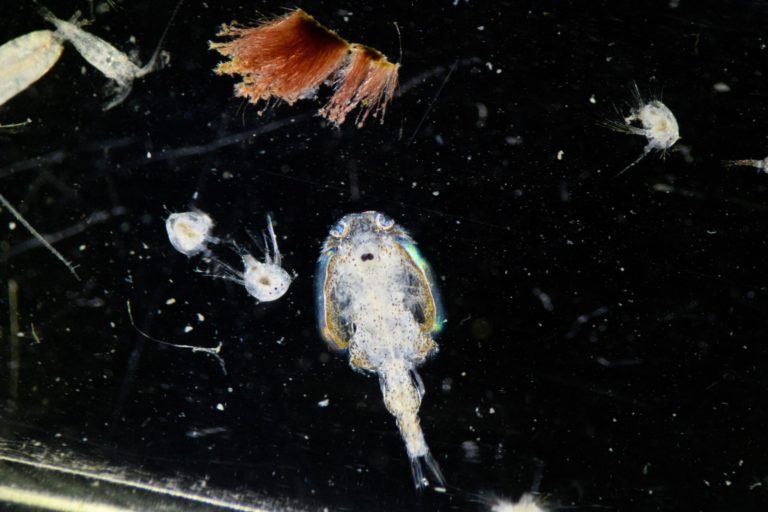
Since then, Morton and other scientists, through the Salmon Coast Field Station, a community-focused conservation organization in Broughton Archipelago, have meticulously recorded data about sea lice prevalence on wild salmon in the region—the largest such dataset for wild salmon anywhere in the world.
Amy Kamarainen, the executive director of the organization, says this dataset has helped reveal interesting dynamics between sea lice and salmon farms.
Using the sea lice data, Bateman and colleagues have explored spatial patterns in where juvenile fish get sea lice from, and how old the lice are when they attack the fish. They found that the heaviest infestation pressures are in areas around the farms.
“It’s not that [the sea lice] aren’t coming from any other sources,” Bateman says, “but the overwhelming dominant source of infection is salmon farms.”
Sea lice infestations can prove costly to salmon farms too, which must invest in treatments and bear the cost of their fish being downgraded in the market or weighing less because their tissues are eaten up. A 2017 study on Norwegian farms pegged such losses at 9% of farm revenues.
Since the first concerning reports of sea lice emerged from Broughton Archipelago, the First Nations have voiced their concerns against the farms and have requested actions to protect wild salmon, which have already declined in the last century due to years of logging, destruction of creeks, agriculture, pollution, and industrial activities up and down the British Columbia coast.
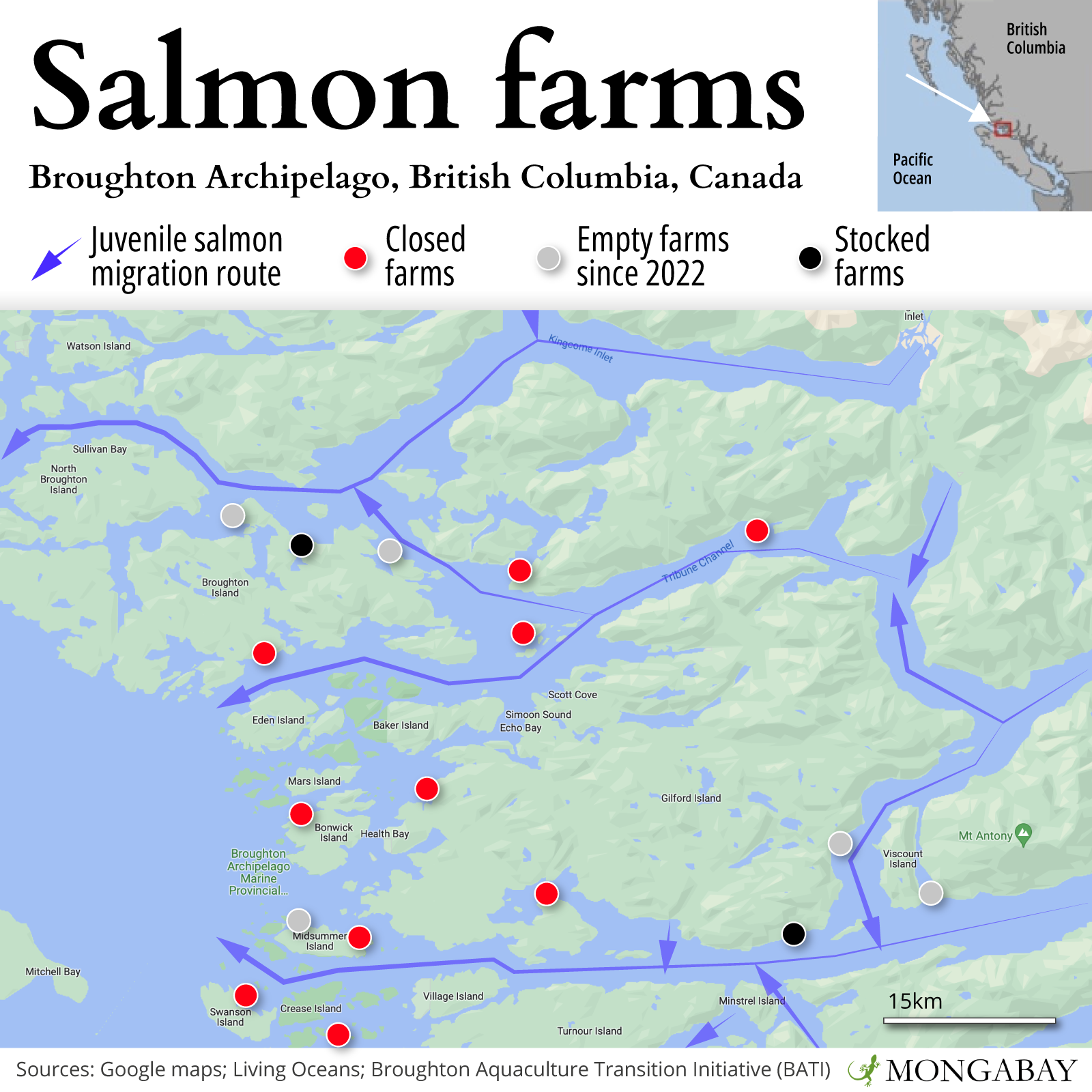
“We are not going to quickly sort out climate change [or] detrimental logging practices,” says Svanvik, “but we can remove the Atlantic salmon farms out of the ocean [and] that will relieve the fish of that stressor.”
In the last two decades, the Nations’ members have occupied fish farms that have been set up in their territories without their consent and protested against fish farm operation in the archipelago. They also took Fisheries and Oceans Canada (DFO), the federal organization involved in regulating fish farms, to court over its failure to protect wild salmon, for which it is responsible.
Until the 2018 agreement was put in place, the First Nations in Broughton did not have any say in the setting up or operations of the fish farms that were affecting their territories and resources, although a few members from the Nations are employed in these farms.
The agreement was a step towards honoring British Columbia’s commitment to United Nations Declaration on the Rights of Indigenous Peoples (UNDRIP).
“We worked out a process in which we will sort out what’s going on there,” says Svanvik, who credits the province for stepping up and affirming the rights of the nations.
In British Columbia, the DFO mandates all salmon farms to monitor sea lice and ensure they are below a predetermined threshold set by the organization (which varies throughout the year depending on the wild salmon’s migratory route). For example, farmed salmon must show an average of less than three free-moving sea lice per fish between March and June, when wild juvenile salmon are migrating out from the region into the ocean.
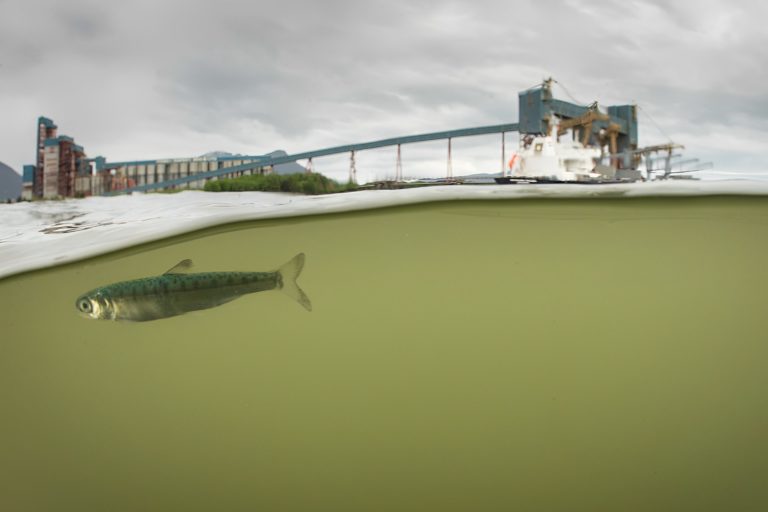
If the lice numbers cross that threshold, farms must begin sea lice treatments, which include freshwater baths, treatment with chemicals, fallowing or harvesting the fish.
On the part of the fish farms, MOWI Canada West tells Mongabay in a statement that it recognizes that salmon farms may be an additional source of sea lice that attack juvenile salmon and proactively manages the risk “by using a suite of management tools that today include freshwater baths and other non-medicinal options.”
Cermaq Canada did not respond to Mongabay’s requests.
Are sea lice populations reducing?
At this point, data on sea lice prevalence on wild salmon from areas around the farms in Broughton Archipelago isn’t convincing to conclude that the closure of the ten salmon farms since 2018 has reduced the sea lice populations.
“Sea louse numbers on juvenile salmon in 2022 were comparable to levels in 2019, and [were] higher than 2020 and 2021,” states a 2022 report by the Salmon Coast Field Station.
The report attributes the high sea lice numbers, despite the closure of ten farms, to the presence of the remaining farms that are operating along the migration routes, from which lice could still infect wild salmon up to about 30 kilometers radius. Longer term data collected after the closure of all farms may provide convincing answers on how farm removals have affected lice infestation on wild salmon.
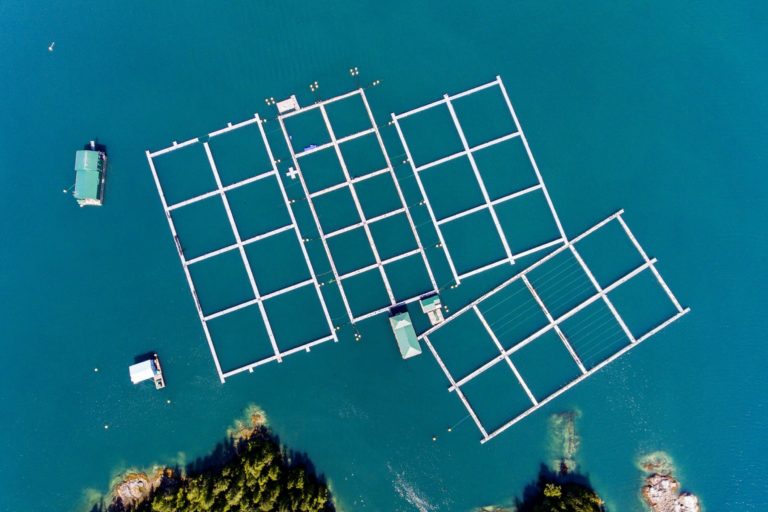
According to a spokesperson from MOWI, data from the monitoring agency they hired showed that irrespective of the research team used and whether salmon farms are active or not, “sea lice levels are highly variable from year to year and no location demonstrates consistent levels of sea lice.”
Even though MOWI’s data comes to a similar conclusion as that from the Salmon Coast Field Station’s, Andrew Bateman of Pacific Salmon Foundation says there are multiple issues with its monitoring process including the way lice are counted, the selection of sampling locations, and ignoring the effect of chemical treatments in managing past numbers.
“This ‘study’ fits with a track record of industry & industry contractors ‘analyzing’ sea louse datasets in ways that my colleagues and I wouldn’t expect to show the patterns we know to be there,” he says, criticizing the industry’s characterization of sea louse counts on wild salmon as misleading, oversimplified, and ignoring decades-long scientific research on sea louse and salmon.
“Analyses of the relevant data are unequivocal: salmon farms are sources of sea lice that can infect wild salmon. This is as true in British Colombia as it is in Norway and Scotland [salmon farms].”
Data from the Salmon Coast Field Station shows that when the DFO fallowed a salmon farm (removed, cleaned and disinfected the fish, pens, nets and other equipment from waters) as an experiment for one season during the 2000s, there was a dramatic decline in sea lice level on the wild fish in the region. After the fallowing season was over, lice levels went back up.
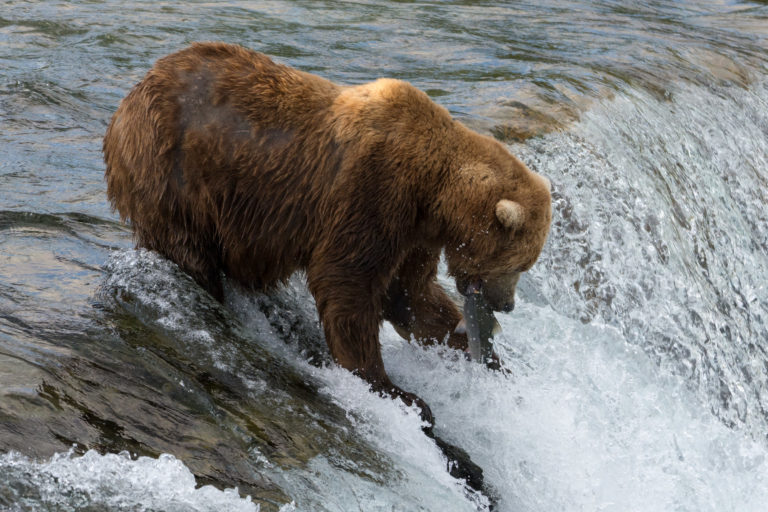
Anecdotally, Svanvik says he’s personally observed an increase in wild salmon populations.
“For the first time in four years now, I have jarred salmon that I can make a sandwich with, I can make a soup with. I have salmon in the freezer that I can fire up for barbeque,” he says, adding that these food items used to be a normal, everyday staple for all his life.
In some places on the archipelago, he says, there have been a notable increase in the salmon runs (the adult fish returning from the ocean) since the farms have stopped stocking pending decisions on their closure.
“There are several systems in Broughton that are already showing benefits from that,” he tells Mongabay
Read more: Troubled waters: A massive salmon farm off the coast of Maine is stalled
Sea lice develop resistance to chemical treatments
Until 2017, the only parasiticide mandated by DFO to be used in salmon farms to treat sea lice infestation was emamectin benzoate, marketed as SLICE. But studies in the last decade have hinted at lice developing resistance to this chemical, raising concern about its efficacy in preventing infestations.
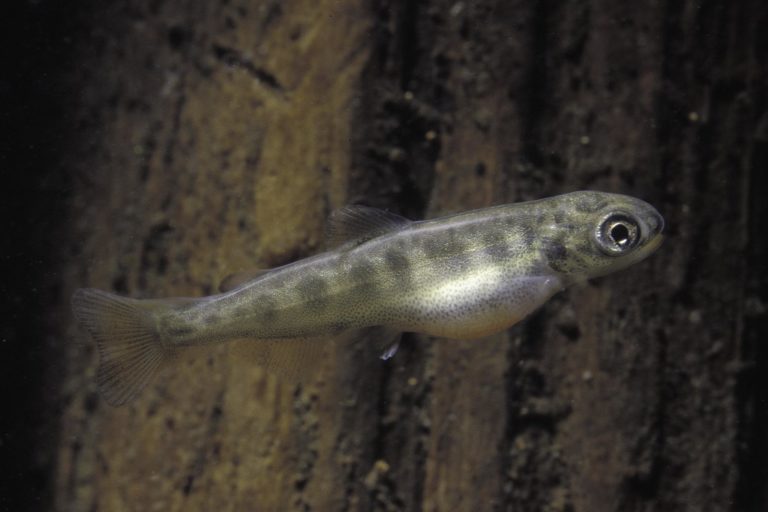
“Over the years, fish farms had started using SLICE as a way to control lice outbreaks on their farm,” explains Amy Kamarainen, the executive director of Salmon Coast Field Station, “but in recent years, we’ve been seeing that be less and less effective as a way to manage sea lice on farms because of the resistance that’s developing.”
A 2022 study in Broughton, based on data collected by scientists and the First Nations-led monitoring program, showed that salmon lice in the Pacific Ocean have recently evolved widespread resistance to SLICE.
According to data from Salmon Coast Field Station, between 2005 and 2014 farms using SLICE and successfully reined in the lice numbers. However, since 2015, the numbers have seen a slight uptick, coinciding with lice infestations in the salmon farms and the lice developing resistance against SLICE.
Similar resistance has been reported against other chemical interventions like azamethiphos and pyrethroids, and scientists say that the lice may evolve resistance to non-chemical interventions like using heat or freshwater to delice, thus limiting options of controlling sea lice infestations.
There is evidence to show emamectin benzoate can be released to the water column, onto the seafloor and be accumulated into the cells of crabs, lobsters, prawns and other marine life forms. A 2012 DFO-led study on Pacific spot prawn found the presence of this chemical in the muscle tissues of these commercially valuable crustaceans near the farms in British Columbia.
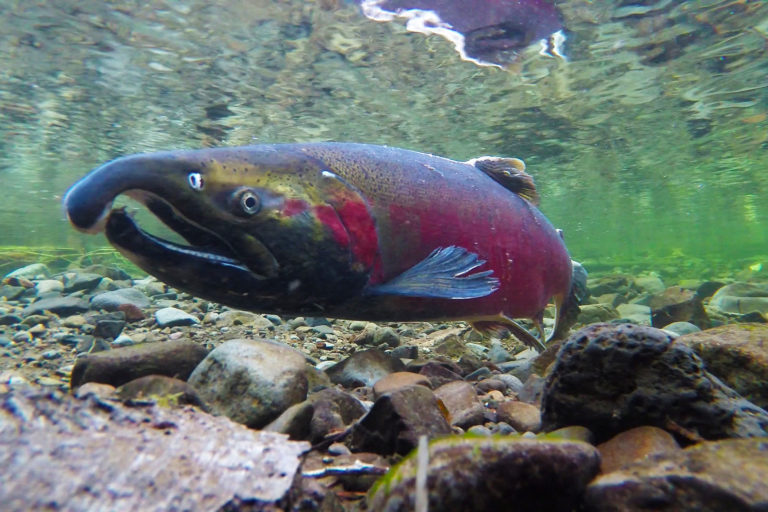
Similar studies in the Atlantic Ocean have found traces of the chemical in lobsters and other benthic organisms.
Another evolving concern with the fish farms is the spread of a bacterial infection caused by Tenaculum maritima and a viral disease caused by a strain of Piscine orthoreovirus (PRV-I), from Atlantic Salmon to the wild Pacific salmon. While the virus strain causes heart and skeletal muscle inflammation in the former, it leads to jaundice/anemia in the native chinook salmon.
A genetic study on the virus by Bateman and his colleagues from DFO, University of British Columbia, and Society for Conservation Biology implicates Atlantic salmon farms as a source of PRV-I’s spread from Europe to North and South East Pacific, including British Columbia.
According to conservationists, Fisheries and Oceans Canada had suppressed evidence of PRV-I’s impacts in British Columbia after it failed to disclose information for ten years. The DFO refutes the statement, asserting that it has been monitoring the spread and impacts of PRV-1 during the time period.
Closing all salmon farms or not?
In 2019, to honor his election promise of removing all open net pen farms from British Columbia’s waters, Prime Minister Justin Trudeau mandated the federal Minister for Fisheries, Oceans and the Canadian Coast Guard to work with the province of British Columbia and Indigenous communities to create a plan to transition away from open net-pen salmon farming in coastal British Columbia waters by 2025.
“Given the unprecedented threats that wild Pacific salmon are facing, we are taking action to conserve and protect them,” said a DFO spokesperson responding to Mongabay’s queries, “That includes reducing or eliminating all manageable risk to wild Pacific salmon populations, by transitioning away from open-net pen salmon aquaculture in BC’s coastal waters.”
But, according to Svanvik, the mandate has been tweaked in a federal transition plan revealed in June 2022. There is no mention of the elimination of the farms at all. Instead, there the plan proposes to “advance innovation and growth in sustainable aquaculture in British Columbia.”
Svanvik says this is a problem because the change in the language shows the federal government may not be as committed to take the farms out of the water as it previously was.
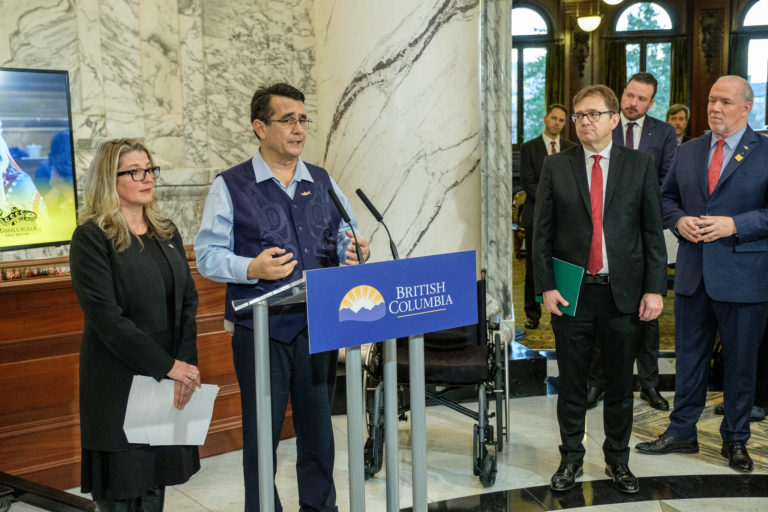
“They [the ministry] are now talking about ‘minimizing or eliminating [wild salmon] interactions with salmon aquaculture’ instead,” he says, “they are trying to find excuses for the farms at stake and that does not make sense.”
However, the loss of open net farms does not have to spell the end of aquaculture for salmon farmers in the region. As a marine biologist, Bateman sees a way forward.
“The way that salmon farms and wild salmon can coexist is to switch to closed containment farming so salmon farms completely cut off the potential for transmission of parasites and pathogens to and from wild fish,” he says.
Land-based salmon farms aim to achieve that but need massive infrastructure investments. In 2013, the ‘Namgis started Kuterra, a land-raised Atlantic salmon farm located a kilometer away from the ocean, as a way towards sustainable aquaculture that does not harm wild salmon.
According to Svanvik, there is no downside to the open net pen farms being gone for the ‘Namgis people because not many Indigenous members are employed in these farms today.
“Is it our dream to be Atlantic salmon farmers? No, but we want Pacific salmon back,” he says. “For us, there is no amount of money that is worth the extinction of salmon.”
Banner image: Juvenile Salmon in Estuary. Image by Travish Campbell via Flickr (CC BY 2.0).
Related listening from Mongabay’s podcast: We look at Indigenous peoples’ long relationship with, and stewardship of, marine environments through two stories of aquaculture practice in New Zealand and Canada. Listen here:
Chile’s marine protected areas aren’t safe from its salmon farms
FEEDBACK: Use this form to send a message to the author of this post. If you want to post a public comment, you can do that at the bottom of the page.
This story first appeared on Mongabay
South Africa Today – Environment
This article is licensed under a Creative Commons Attribution-NoDerivatives 4.0 International License.
You may republish this article, so long as you credit the authors and Mongabay, and do not change the text. Please include a link back to the original article.



